Yard and Garden News
The following news stories are written by Rosie Lerner, Extension Consumer Horticulture Specialist, and are distributed to news media around the state by Agricultural Communication Service, at Purdue University.
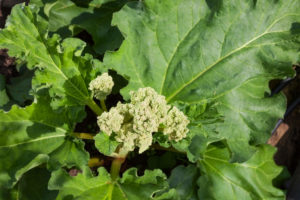
Rhubarb is prone to bolting. Here’s what to do
We humans can be so difficult to please. When plants flower when we want them to, we call it blooming. But when plants flower when we don’t want them to, we call it bolting. Flowering is an undesirable trait when growing rhubarb; therefore, bolting describes the event. Gardeners frequently ask why their rhubarb is bolting. Well, if you think of it from the plant’s perspective, it is just a part of the plant’s natural life […]
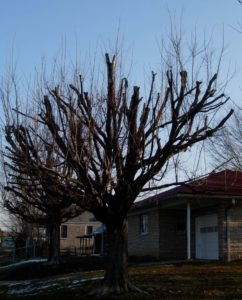
Please Don’t Top Your Trees
Topping a tree is an all-too-common practice among homeowners, particularly when their trees become too tall and pose a possible threat to the house or overhead power lines. Some have the trees topped because they believe, or are led to believe, that topping is a good pruning practice. Some situations obviously require the removal of large limbs for the sake of safety. But topping is a drastic step that ultimately endangers the tree’s life. Removing […]

Snow Is Good for Gardens
Though your aching back may not agree, recent heavy snows actually will be good for your garden and landscape. Snow provides moisture as well as protection from cold and wind. Snow is an excellent insulator against low temperatures and excessive winds. The extent of protection depends on the depth of snow. In addition, the soil gives off some heat so that the temperature at the soil surface can be much warmer than the air temperature. […]
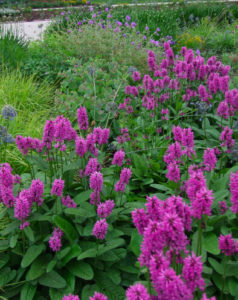
Pollinators are abuzz for the 2019 Perennial of the Year
By selecting Stachys officinalis ‘Hummelo’ as its 2019 Perennial Plant of the Year, the Perennial Plant Association once again continued its focus on pollinator-friendly plants. ‘Hummelo’ is a compact, clump-forming perennial, reaching 1.5 to 2 feet tall and wide. Over time, the plants will form a dense mat, spreading slowly from creeping underground stems. Showy magenta flower spikes rise well above the foliage in midsummer and are quite attractive to butterflies and other pollinators. Plants are hardy in […]
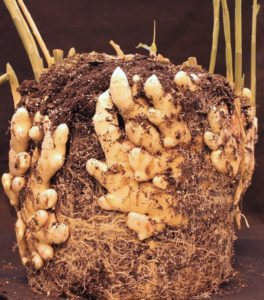
Spice Up Your Holidays
Some of the most popular spices used this time of year are harvested from various parts of exotic tropical plants, lending a special flavor to holiday recipes. Ginger is harvested from the rhizomes (underground stems) of a tropical/sub-tropical herbaceous plant, Zingiber officinale. Ginger is native to tropical Asia and is grown commercially in Hawaii and many other countries, including China, India, Thailand and Brazil. The rhizomes are harvested after the first year of the plant’s […]

New Resource for Identifying Common Yard and Garden Plants
Want to know more about common yard and garden plants? Meet the new Purdue Plant ID Pal. The web-based resource is easy to use. 4-H and FFA youth will find it especially helpful as they learn to identify ornamentals, fruits, and vegetables for local, state and national competitions. Purdue Plant ID Pal has four sections: ornamentals (woody plants) flowers and indoor plants fruits and nuts vegetables You’ll find more than 850 photos of nearly 200 […]

Time to Harvest Sweet Potatoes
Although some folks may be sad to see summer coming to a close, many gardeners are looking forward to harvesting their sweet potato treasures. Sweet potatoes are warm-season plants that are very sensitive to cold temperatures. The tuberous roots should be harvested by the time frost kills the vines or soon thereafter. Sweet potato roots continue to grow until frost kills the vines. Roots can be left in the ground for a short while; […]

Oedema Is a Corky Quirk
Plants that experience extremes in soil moisture may develop spots on their leaves, called “oedema” (also spelled “edema”). The spots may first appear as a blister or raised spot, particularly on the undersides of leaves, but may occur on the top side as well as on the stems. Eventually, the blister develops a rust-colored, cork-like scab. Oedema is most commonly seen in the greenhouse on ivy-leaf geraniums but also on pansies, jade, and other thick-leaved […]

Perennials for Shady Gardens
Plants differ in their adaptability to different growing conditions. Sunshine is one of the most significant factors. We often think of light as being either sunny or shady, but, in fact, there are many “shades” of light in between. Your garden may experience light shade, such as that filtered through an overhanging tree; dense shade, such as that found in woodlands; or intermittent shade from an object, such as a building that blocks the sun […]
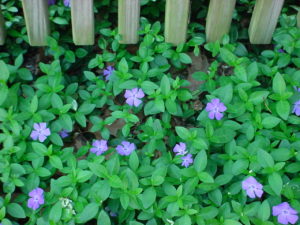
Use Caution With Spreading Plants
People often select plants first for their beauty and second for their functionality in the garden. Frequently, we don’t know or don’t consider a plant’s behavior when we’re selecting them. Almost by definition, a species that is an effective ground cover will have a spreading habit. But does that make the species aggressive or invasive? There can be much confusion about the meaning of the terms aggressive and invasive. Some plants, given their optimal habitat, […]